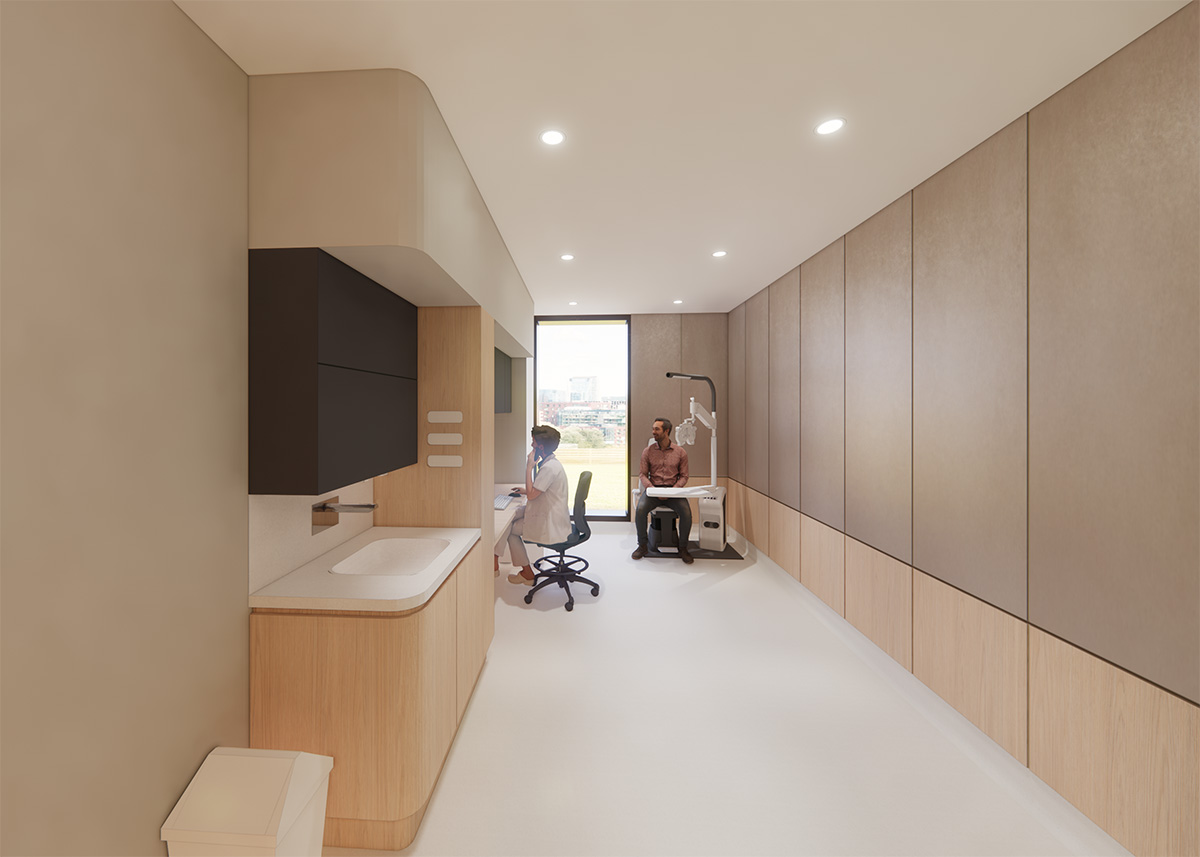News
Transforming clinical trials
Work is underway on a new state-of-the-art clinical trial centre that will give more people the chance to take part in research.
CERA Managing Director Professor Keith Martin says the new centre will become a go-to location for global clinical trials of new treatments to prevent blindness, restore sight and transform the lives of people living with incurable conditions.
“The new clinical trial centre will enable us to offer more cutting-edge treatments to patients with diseases that until very recently have been considered incurable, like inherited retinal diseases – which are the leading cause of blindness in working age Australians,’’ he says.
“It will also enable us to expand trials available to people with age-related macular degeneration, glaucoma and diabetic eye diseases.’’
The new eye clinical trials centre will be embedded in CERA, which is co‑located with the University of Melbourne Department of Surgery (Ophthalmology) at the Royal Victorian Eye and Ear Hospital.
It is expected to be fully operational by the end of 2024.
“Together, CERA, the University of Melbourne and the Eye and Ear Hospital form one of the world’s leading partnerships in eye health and research,’’ says Professor Martin.
“The new eye clinical trial centre will enable us to make an even greater impact and move us closer to our goal of a world free from vision loss and blindness.’’
The new centre is supported by $10 million in backing from Breakthrough Victoria – an independent agency which manages an investment fund set up by the Victorian Government designed to make the state a global leader in innovation.
Plans for the new centre were announced in June by Victoria’s Minister for Industry and Innovation Ben Carroll and Minister for Health Mary-Anne Thomas.

Building on success
The new centre will cater for the global growth in new treatments for eye disease.
In 2022, CERA conducted 60 clinical research projects involving more than 2300 people.
Forty of these involved an intervention or investigational treatment – and there is strong future demand from industry partners who want CERA researchers to run their clinical trials.
Professor Martin says the international standing of CERA’s clinician-researchers – like Head of Macular Research Professor Robyn Guymer AM, Head of Clinical Trials Research Associate Professor Lyndell Lim, and Dr Tom Edwards, an expert in the delivery of retinal gene therapies – has been central to bringing many of these trials to Australia.
“Our new centre will provide clinical trial facilities that match the high calibre of the research done by CERA researchers and our industry, hospital and university partners,’’ he says.
Patient experience
The new trial centre will be located on Level 7 of the Royal Victorian Eye and Ear Hospital.
It will include a modern, relaxing patient lounge area – complete with assistance dog station – for trial participants and their carers.
It will also include state-of-the-art new imaging suites, vision lanes, laser and dark rooms, complemented by an eye care telehealth service and a referral network which will enable more people living in rural and regional areas to take part in trials.
Professor Martin says Breakthrough Victoria’s support for the new clinical trial centre is an investment in the future of eye health and research.
“It will strengthen Victoria’s reputation as an international leader in medical research and fighting blindness.’’
Professor Martin says the new clinical trial centre will also provide a boost for CERA’s lab-based scientists.
“The new centre will provide a direct pathway from the pre-clinical research to clinical trial, making it easier for our discovery scientists to translate their research into treatments that will benefit patients,’’ he says.
“In the past, many Australian inventors and scientists have had to take their work offshore.
“The new centre will ensure that new eye treatments and devices developed here in Australia are trialled here to benefit local patients.’’
Donor support
Professor Martin says the continued support of donors has been instrumental in CERA’s vision for a new clinical trials centre.
“Without donor support of both our discovery and clinical research programs, CERA would not have been able to attract this important investment,” he says.
“We look forward to sharing updates, and we are excited by the opportunities to give more people access to innovative, sight‑saving treatments.’’